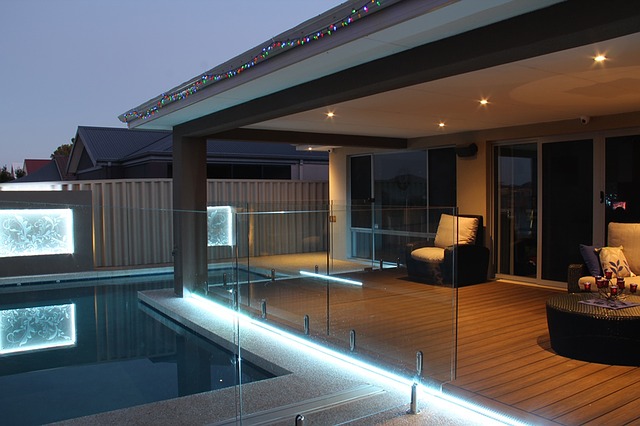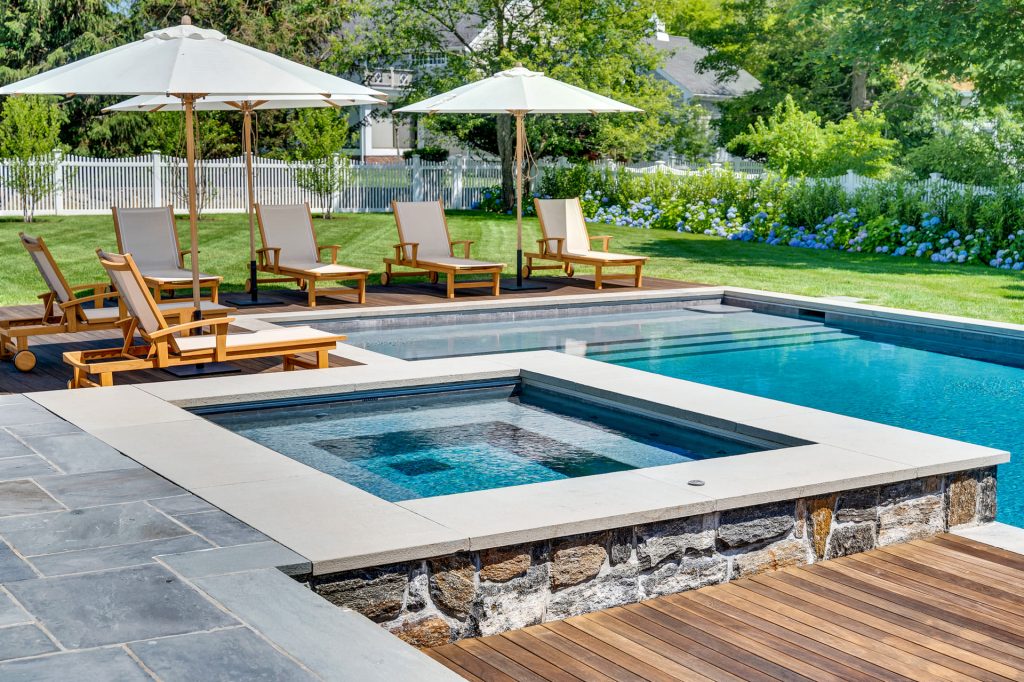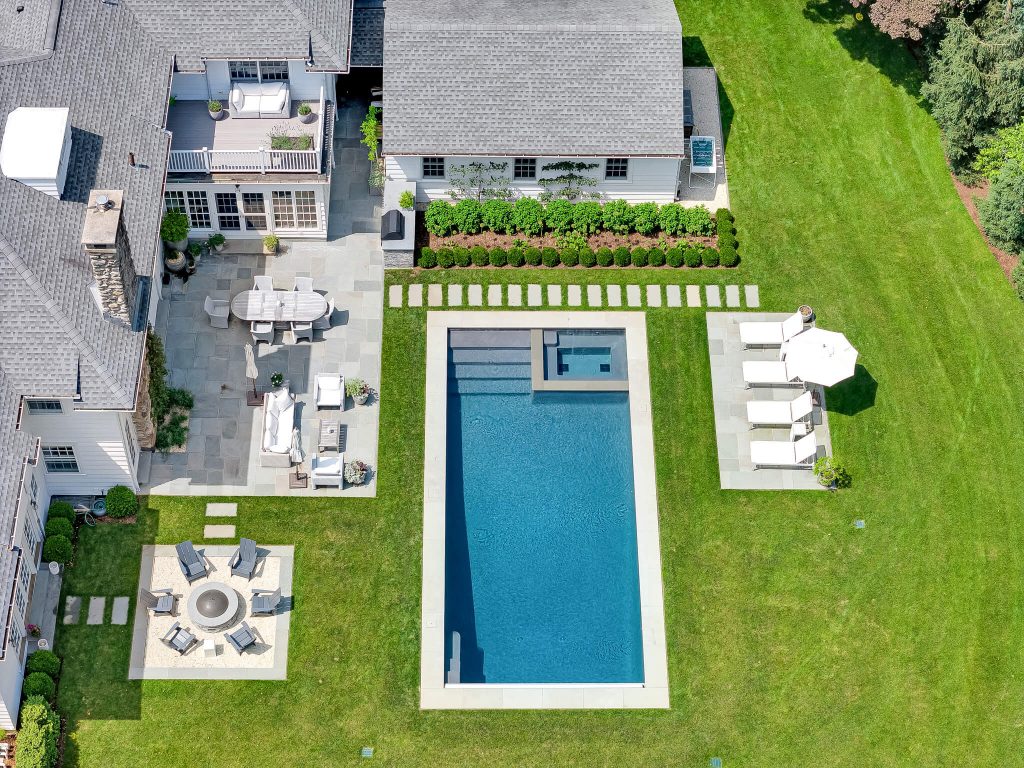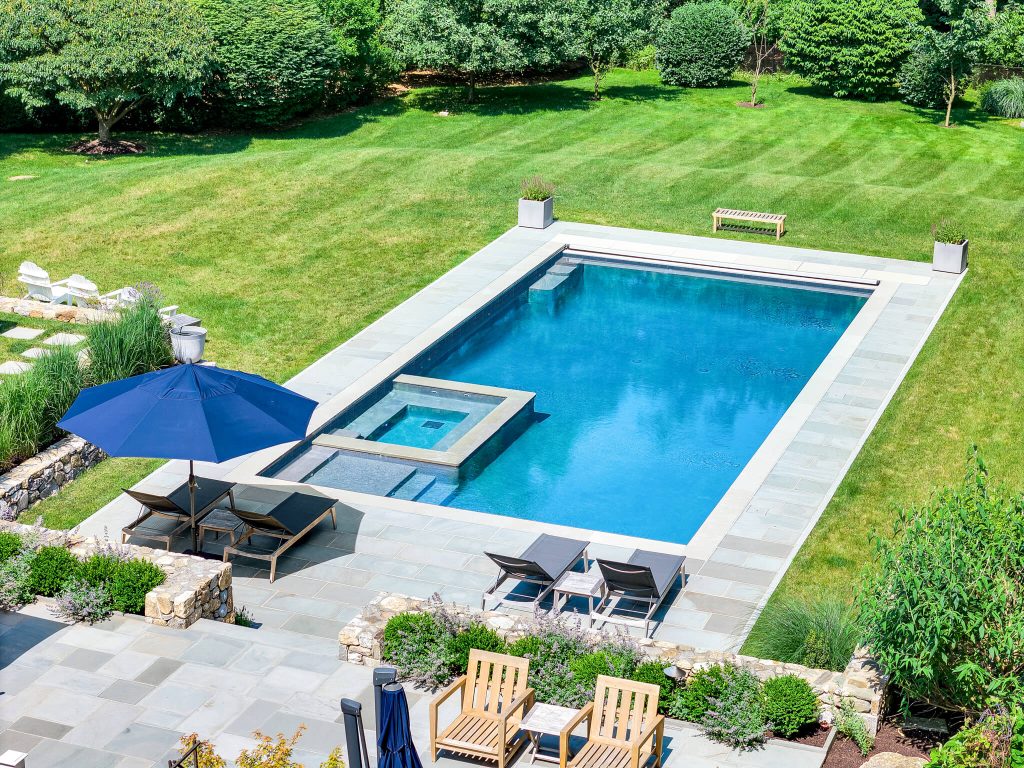Luxury pool construction in the Hudson Valley can leave you ecstatic, but the laws, regulations, and requirements around safety can dull that excitement. It’s normal for homeowners in Westchester, Rockland, or Dutchess County to wonder about pool safety requirements. Many people assume safety codes vary between towns. In reality, all three counties follow the same statewide Hudson Valley pool safety regulations based on New York’s Uniform Code.
Each local building department enforces these rules in their own way, but they’re all the same safety principles. Learning the basic pool fence Westchester rules, Rockland pool alarm laws, and Dutchess pool barrier requirements from the start saves your construction from serious headaches.
Quick Answer
In the Hudson Valley, including Westchester, Rockland, and Dutchess Counties, all residential pools deeper than 24 inches must be surrounded by a barrier at least 48 inches (4 feet) high. Gates must be self-closing and self-latching, and any pool built or modified after December 14, 2006, must include an audible alarm. Local towns enforce these rules through permitting and inspections. The main pool fence Westchester rules, Rockland pool alarm standards, and Dutchess pool barrier requirements all stem from Section R326 of the New York State Residential Code.
Why Pool Safety Laws Matter for Westchester, Rockland, and Dutchess Homeowners
Accidental drownings in private backyards happen more often than they should. In fact, the NY Department of State finds that children under 15 make up more than 78% of pool and spa submersion injuries.
That’s why these Hudson Valley pool safety regulations exist. They’re not arbitrary; they’re designed to prevent these tragedies. Barriers, alarms, and enclosures reduce unsupervised access and provide confidence that your pool area meets all New York State’s residential pool compliance standards.
Whether your home is in suburban Westchester, riverside Rockland, or rural Dutchess County, inspectors apply the same safety checklist.
Understanding New York’s Pool Safety Code (Section R326) Before You Build
The 2020 Residential Code of New York State (RCNYS) forms the legal foundation for all Hudson Valley pool safety regulations. Section R326 specifies design and construction standards for fences, alarms, and swimming pool enclosures around residential properties.
In practical terms, this means:
- A minimum barrier height of 48 inches (4 feet) from finished grade.
- Gates that close and latch automatically, swinging outward from the pool area.
- Door or surface alarms for pools built or modified after December 2006.
- Temporary barriers required during construction.
These rules shape pool fence Westchester regulations, Rockland County pool alarm laws, and Dutchess pool barrier inspections. They keep the expectations consistent across the Hudson Valley.
Your Hudson Valley Pool Safety Checklist: What Inspectors Look For
Here’s what every homeowner should confirm before scheduling inspection day:
- Barrier Height: At least 48 inches tall when measured from the outside.
- Gaps and Openings: No more than 2 inches below the fence and 4 inches between vertical slats.
- Gate Latches: Self-closing, self-latching, at least 40 inches above ground.
- Gate Direction: Must open outward, away from the water.
- Door Alarms: UL 2017–listed and capable of resetting automatically.
- Pool Alarms: ASTM F2208–compliant and audible both inside the home and poolside.
- Barrier Materials: Non-climbable fencing, walls, or approved mesh enclosures.
- Temporary Barriers: Required during construction or renovation.
- Inspection Cadence: Initial, follow-up, and final stages before use approval.
Skipping any of these steps can result in frustration, failed inspections or delayed approvals.
At-a-Glance: Key Pool Barrier and Alarm Requirements for Hudson Valley Homes
| Feature | Requirement | Applicable Notes |
| Barrier Height | Minimum 48 inches | Applies statewide to all residential pools |
| Gate Latch Height | ≥40 inches | Must open outward and close automatically |
| Barrier Materials | Chain link ≤2.25”, mesh ≤1.75” | No protrusions or decorative cutouts |
| Door Alarms | UL 2017–listed | Required when a dwelling wall forms part of the barrier |
| Pool Surface Alarms | ASTM F2208–compliant | Required for post-2006 installations |
| Temporary Barrier | 48-inch minimum | Must convert to permanent within 90 days |
| Inspection Cadence | 3-stage process | Managed by town inspectors |
Dutchess Pool Barrier Rules: How to Ensure a Fully Enclosed, Compliant Pool
Dutchess County applies the same residential pool compliance standards as other New York regions but emphasizes complete enclosure. The Dutchess pool barrier must fully surround the pool, preventing access from any part of the yard.
Inspectors check for self-closing gates and child-safe latch placement. Many rural homeowners integrate retaining walls or slopes as part of their fencing.
During permitting, you’ll submit a detailed site plan showing fence layout, gate direction, and any attached structures. Final approval hinges on how precisely than plan’s being followed. Not-compliance stalls the process with delays or re-inspections.
Pool Fence Westchester Rules Explained: Permits, Placement, and Height Standards
Pool fence Westchester rules are among the most detailed in New York. Towns like Mamaroneck and Yorktown need homeowners to file plans that specify fencing materials, utilities, and drainage zones.
Solid or decorative fences are allowed, but swimming pool enclosure Westchester standards prohibit climbable surfaces or openings wider than 4 inches. Many homeowners choose glass or aluminum fencing to maintain open views while remaining compliant.
Separate fence permits are also required, ensuring that both pool placement and enclosure design meet local and state codes. Proper documentation prevents permit denials and helps secure final sign-off without added inspections.
Rockland Pool Alarm Requirements: Creating Safer Pools Through Smart Tech
The Rockland pool alarm requirements apply to all new or substantially modified pools after 2006. They should align with the ASTM F2208 standard for sound and response time.
The alarms must detect water entry and sound both indoors and poolside within seconds. If the home’s walls make up part of the pool barrier, door alarms are also mandatory.
Inspectors will test alarm volume and timing at the final visit to verify compliance. Smart alarms tied to Wi-Fi or phone apps come in handy for these, providing safety and convenience to Rockland county homeowners.
The Pool Inspection Process in the Hudson Valley: From Permit to Final Approval
Across the region, inspectors follow a three-phase process for residential pool compliance in New York State:
- Initial Review: Submit plans detailing your fence location, alarm type, and barrier materials.
- Mid-Construction Check: Inspectors verify that a temporary barrier surrounds the site, maintaining safety during installation.
- Final Inspection: Officials confirm latch placement, alarm functionality, and full adherence to Hudson Valley pool safety regulations.
Passing all three phases results in a final approval certificate. That document makes a great secret weapon for homeowners looking to refinance, sell, or insure their property. For more planning guidance, browse our Top Pool Building Questions.
Temporary Pool Barriers: Staying Safe During Construction and Installation
Before your pool project is complete, a temporary 48-inch (4 feet) high barrier must enclose the construction area.
For above-ground pools, locking or removable ladders may count toward compliance. Dutchess inspectors often allow mesh fencing during installation, provided it encloses the area entirely.
Permanent barriers must replace temporary ones within 90 days of permit issuance. Local building officials can extend that timeframe for weather-related delays or material shortages.
Best Materials for Pool Barriers: Safe, Stylish Options for Hudson Valley Homes
New York’s Uniform Code offers flexibility in pool design, as long as fences meet spacing and strength requirements. Common options include:
- Vinyl or wood fences with narrow vertical spacing,
- Chain link fences with ≤2.25-inch openings,
- Masonry walls free of handholds,
- Mesh fencing for removable systems, and
- Tempered glass panels for luxury pools.
Inspectors in Dutchess County consider how enclosures integrate with landscaping. Meanwhile, Westchester County swimming pool enclosure standards emphasize durability and non-climbable construction. If privacy is a priority, see how to keep a Westchester/Rockland pool private without tall walls.
Local Enforcement in Westchester, Rockland, and Dutchess: What Really Differs
Each municipality customizes its process slightly:
- Mamaroneck (Westchester): Requires two full site plans and a separate barrier permit.
- Clarkstown (Rockland): Caps fence height at six feet and reviews alarms during the final inspection.
- Poughkeepsie (Dutchess): Verifies Dutchess County swimming pool barriers for complete enclosure before final approval.
Hudson Valley pool safety regulations stay consistent at a macro level, even though their procedures differ. This keeps homeowners knowing what to expect.
Staying Compliant: Maintaining Your Pool Fence, Alarms, and Barriers Year-Round
Once approved, homeowners must maintain all barriers and alarms per Section 303.2 of the Property Maintenance Code.
Inspect fences every year for shifting soil or wear, test alarms every season, and keep documentation of maintenance. Westchester homeowners often schedule inspections each spring. Rockland residents test alarm batteries before reopening. Dutchess homeowners ensure gates remain self-latching after winter weather.
How Pool Safety Adds Family Protection and Long-Term Home Value
The Department of State emphasizes that barriers and alarms “provide protection against potential drowning by sufficiently preventing access”.
Beyond preventing accidents, compliance with Hudson Valley pool safety regulations also improves property value and insurability. Westchester fences boost privacy, while Rockland alarms reassure families with small children. Dutchess enclosures blend naturally with the landscape.
Key Takeaways: What Every Hudson Valley Homeowner Should Remember About Pool Safety
- Barrier height: At least 48 inches tall, fully enclosing the pool.
- Gates: Self-closing, self-latching, outward-opening, with child-proof latches.
- Alarms: Required for pools built or renovated after 2006; must sound both indoors and outside.
- Temporary fencing: Required during construction until permanent installation is complete.
- Local focus: Pool fence Westchester rules emphasize permitting; Rockland pool alarm inspections test functionality; Dutchess pool barrier checks ensure enclosure integrity.
- Maintenance: Inspect fences and alarms every year to ensure safety and compliance.
Following these steps ensures full compliance with Hudson Valley pool safety regulations while keeping your family protected.
Build Confidently, Swim Safely, and Enjoy Your Pool All Summer
Owning a pool in the Hudson Valley should never bring regulatory headaches. By understanding pool fence Westchester rules, Rockland pool alarm standards, and Dutchess pool barrier requirements, you’ll be prepared for every inspection and long-term ownership.
Before construction, contact your town’s building department to confirm application steps and local residential pool compliance expectations. With the right plan, your pool will meet all safety standards and be ready for stress-free summer fun.
Resources
New York Department of State – Summary of Requirements for Swimming Pools and Spas
New York Department of State – Pool Safety Information
Town of Mamaroneck – Swimming Pool Permit Requirements




